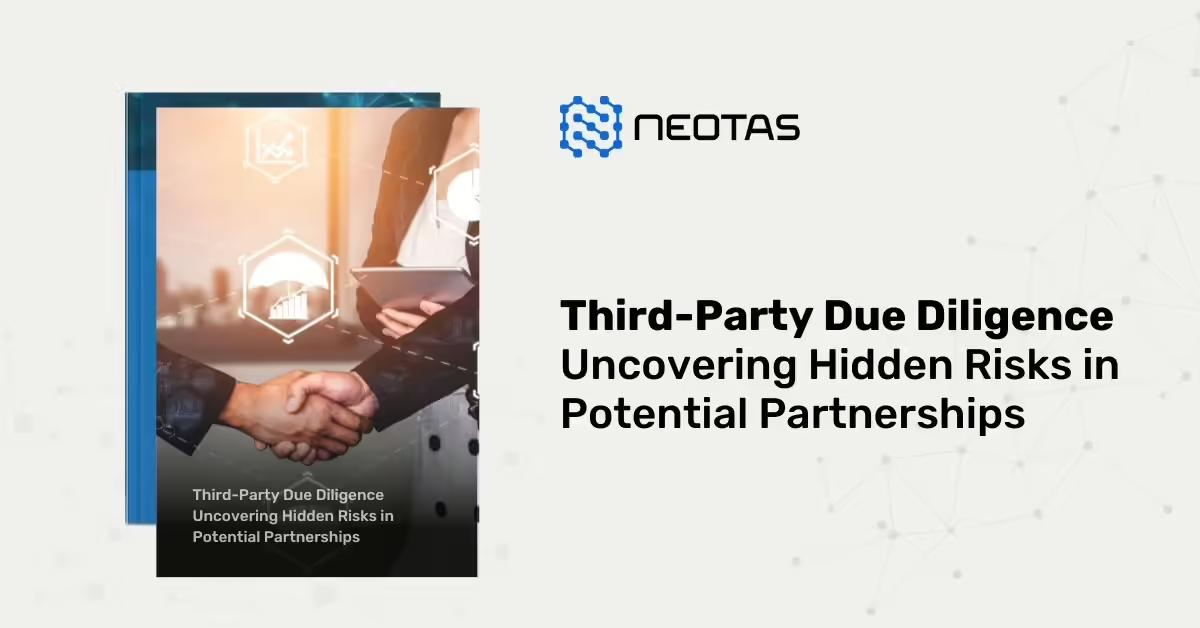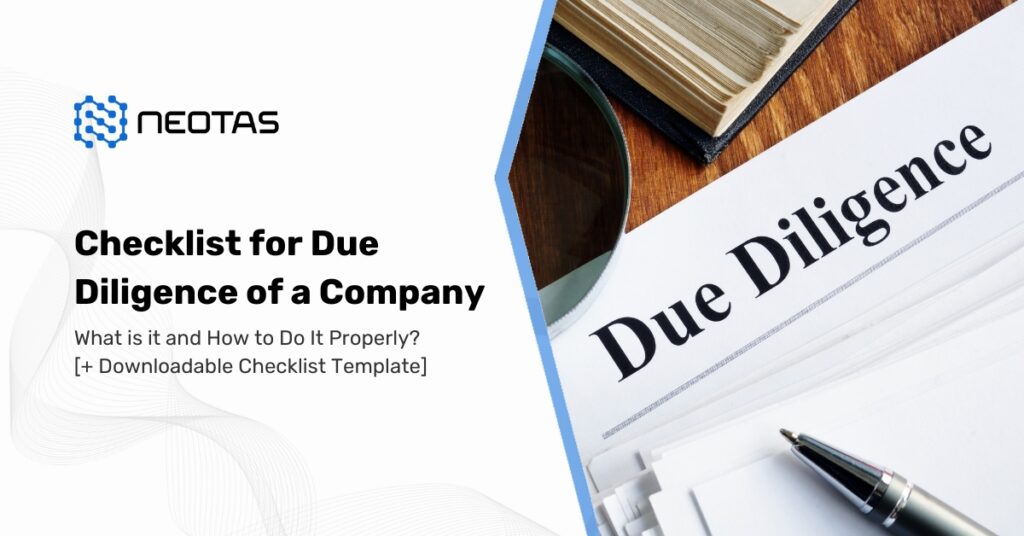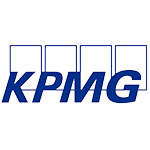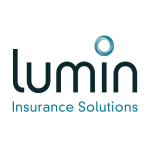

A Practical Guide to Streamlining Vendor Risk Assessment with Ready-to-Use Checklists and Compliance-Focused Questionnaires. Empower procurement, compliance, finance, and legal teams with a unified resource to evaluate third-party risks, uncover red flags, and ensure responsible supplier onboarding.
What This Guide Covers
A Due Diligence Checklist is a structured list of items used to assess a third-party’s risk profile across legal, financial, ESG, cybersecurity, and operational domains.
A Due Diligence Questionnaire (VDDQ) is a tool you send to vendors to collect responses about their internal controls, compliance status, and risk exposure. Both are critical for managing supplier risk and ensuring regulatory, financial, and reputational safety before onboarding or renewing a vendor relationship.
Whether you’re onboarding a new supplier, renewing a long-term IT service provider, or outsourcing key operations, the risks are no longer hidden — they are shared.
From data breaches to bribery scandals, ESG violations to operational collapse, many of today’s biggest corporate crises have one common root: a third-party failure.
And here’s the kicker — in almost every case, there was a due diligence gap.
That’s why forward-thinking Procurement and Risk teams no longer treat due diligence as a one-time checkbox. They treat it as an ongoing, strategic discipline. And the cornerstone of that discipline? A properly executed checklist and a clear, tailored questionnaire.
| Tool | Purpose | Owner | Format |
|---|---|---|---|
| Checklist | Internal tool used by your organisation to systematically assess a vendor’s risk across key categories. | Procurement / Risk Team | Typically Excel, Word, or platform-based |
| Questionnaire | A document or form sent to the vendor to collect their answers and evidence on key risk areas. | Vendor to complete; owned by Procurement / Compliance | Word, Google Form, Online Portal |
- Use the checklist to structure your internal risk review
- Use the questionnaire to collect vendor inputs, docs, and evidence
They work hand-in-hand: a robust checklist helps you decide what to ask, and the questionnaire helps you get the answers — directly from the source.
Too often, businesses either:
Both lead to blind spots.
To do due diligence right, you need:
Done right, this approach protects your organisation across four levels:
1. Regulatory Protection
Stay compliant with laws like GDPR, the UK Bribery Act, the US FCPA, and evolving ESG regulations. Due diligence is your first line of defence — and proof that you knew your vendor.
2. Financial & Operational Continuity
Avoid working with vendors who may go bankrupt, underdeliver, or expose your supply chain to downstream risk. Knowing their financial, legal, and operational position saves costly disruptions.
3. Reputation & Ethical Safety
You’re judged by the company you keep. If a vendor violates labour laws, faces sanctions, or lands in a corruption scandal, your brand takes the hit too.
4. Risk-Based Decision Making
Vendor due diligence isn’t just about saying “no”. It’s about knowing when to say yes — but with controls. A risk-based checklist approach lets you assign mitigation measures, track red flags, and onboard with confidence.
This guide has been crafted to serve the needs of multiple decision-makers, each with their own concerns:

Want vendors who deliver consistently, meet deadlines, and don’t trigger mid-contract chaos. The checklist ensures their suppliers meet quality, capacity, and compliance standards.

Must ensure vendors don’t expose the business to regulatory fines or reputational loss. They need clear documentation of PEP checks, sanctions screening, anti-bribery policies, and data privacy compliance.

Need visibility into vendor financials to avoid hidden liabilities, insolvency risk, or cost overrun. A good checklist reviews balance sheets, credit scores, insurance coverage, and more.

Look for IP protections, contract terms, indemnity clauses, and historical disputes. They want clear evidence that vendors are licensed, authorised, and litigation-free.

See vendors as extensions of the business — and potential risk entry points. They need structured documentation, risk scoring, and ongoing monitoring frameworks.

Don’t have internal legal or risk teams. They need a practical, ready-to-use checklist and questionnaire to avoid onboarding vendors who can become future liabilities.
Here’s what you’ll get as we move through this long-form guide — each section is formatted for scanning, action, and application:
A structured breakdown across legal, financial, ESG, cyber, reputation, and sanctions categories — with expert guidance on what to check, why it matters, and what to look out for.
Sample questions, best practices, mistakes to avoid, and tips for cross-team adoption.
Get your hands on the Neotas-crafted, ready-to-use Vendor Due Diligence Checklist + Questionnaire template (PDF) with smart sections, example answers, and scoring guidance.
 Vendor Due Diligence Checklist
Vendor Due Diligence ChecklistA structured checklist aligned to your industry, regulations, and business risks. Use the checklist to structure your internal risk review
A powerful due diligence process begins with clarity — and that means knowing exactly what to check, why it matters, and what to watch out for.
This section outlines a fully structured, cross-functional Vendor Due Diligence Checklist you can use before onboarding any critical third party. It’s broken down by category to align with internal teams — Legal, Finance, Compliance, IT Security, ESG, and Procurement.
Each sub-section includes:
This is the foundation. Before signing any agreement, verify the vendor is legally authorised to operate and aligned with your jurisdiction’s rules.
Vendors without the right licences or governance expose you to legal liability. If they’re fined or shut down mid-contract, your operations may be interrupted.




Can the vendor fulfil their obligations over the long term? One of the most overlooked — yet business-critical — checks.
A financially unstable vendor may default, go insolvent, or under-deliver on SLAs. You need assurance that they can stay solvent and scalable during your engagement.




More than a trend, ESG compliance is now a regulatory requirement in many jurisdictions. Ignoring it can expose your firm to serious reputational and legal risk.
Your vendors’ behaviour is a reflection of your values — and increasingly, your risk. Poor ESG practices can derail funding, upset stakeholders, and invite scrutiny.




Does the vendor have the people, processes, and infrastructure to reliably deliver?
A vendor that looks good on paper may still struggle to meet your timelines or service levels. Due diligence must validate that their operations are stable, documented, and resilient.




If your vendor will access your systems or handle sensitive data — this is non-negotiable.
Most modern risk comes through the digital supply chain. You must ensure vendors won’t become the weak link in your data or infrastructure security posture.




Beyond corporate checks, you must know who you’re dealing with at an individual and geopolitical level.
Doing business with a sanctioned party, or one linked to politically exposed figures, can trigger fines, compliance violations, or public scandals.




Search vendor mentions across news, watchdog blogs, customer forums, and investor boards.
Look for:
Ask for 2–3 similar clients and speak to them directly. Especially for critical services.
Ask about:
This was just the structured overview. But if you’re ready to apply this, our team has crafted a ready-to-use, editable checklist and questionnaire template in Word/PDF format.
You’ll find:
Download Now: Vendor Due Diligence Checklist + Questionnaire Template (Free)
Don’t start from scratch. Use the form below to download the complete set and bring structure, clarity, and speed to your next vendor review.
Ideal for: Procurement, Compliance, Legal, and Risk teams
Use Cases: Onboarding, renewal reviews, ongoing monitoring
How to Build, Use & Optimise It
So you’ve built your internal checklist. You know what needs to be checked — legal, financial, cybersecurity, ESG, and so on.
But how do you actually get this information from the vendor?
This is where the Vendor Due Diligence Questionnaire (VDDQ) comes in.
It’s the bridge between your internal checklist and the vendor’s own operations. If your checklist is the map, the questionnaire is your GPS — it tells you where the vendor really stands.
Put simply, a VDDQ is a structured set of questions you send to a vendor to assess their risk profile. It helps you gather:
It’s a practical tool that enables Procurement, Legal, and Compliance teams to validate a vendor before signing any deal — and to document that validation process clearly.
A strong vendor due diligence questionnaire is more than a form. It needs to be:
| Quality | Description |
|---|---|
| Clear | Questions should be written in plain, business-friendly language — not legalese or vague tech jargon |
| Targeted | Tailored to the risk level and service type of the vendor (e.g. cloud vendor ≠ facilities contractor) |
| Evidence-Backed | Asks for supporting documents or links, not just “yes/no” answers |
| Actionable | The answers should lead to decisions — flag, approve, or follow up |
| Collaborative | Structured so that both vendor and internal reviewers can track status, updates, and final approval |
Here’s how we recommend structuring your vendor questionnaire for full coverage — especially for mid-to-high-risk vendors.
Basic but essential.
Many organisations send out vendor forms that are either ignored or filled out with vague, unhelpful responses. Here’s where most go wrong:

One-size-fits-all doesn’t work. Tailor questions to the type of vendor and level of risk. Don’t ask a catering service about ISO 27001.

Some firms send 120-question Excel sheets with no clear sections, instructions, or deadlines. The result? Frustrated vendors and incomplete responses. Keep it focused and chunked.

Even a perfect questionnaire is useless if there’s no internal owner reviewing responses, logging red flags, or requesting clarifications.

Your VDDQ should evolve with changes in law (e.g. new ESG rules), market trends (e.g. AI risk), or organisational priorities (e.g. moving to the cloud).
We’ve simplified the heavy lifting by creating a ready-to-use Vendor Due Diligence Questionnaire that complements our master checklist.
What you’ll get in the editable Word/PDF bundle:
You can send this form directly to your vendor, or adapt it into your onboarding workflow or TPRM tool.
 Vendor Due Diligence Questionnaire
Vendor Due Diligence QuestionnaireWhether you're onboarding a new supplier, reviewing contracts, or setting up an automated due diligence workflow — this template will give you a head start.
Reading a due diligence checklist is one thing. Using it well — consistently, across departments, without delays or shortcuts — is another.
This section is about turning your checklist and questionnaire into a working system. Whether you’re a procurement lead, compliance officer, or startup founder, these are the practices that bring your due diligence process to life.
Not every supplier needs the same level of scrutiny. Create a risk-based classification for all third parties before starting the checklist.
| Tier | Description | Example |
|---|---|---|
| Tier 1 | High-risk or business-critical | Cloud hosting provider, payroll platform |
| Tier 2 | Moderate risk | Marketing agency, recruitment partner |
| Tier 3 | Low risk or commoditised | Office stationery vendor, caterer |

Split the checklist across key internal teams:
| Team | Responsibilities |
|---|---|
| Procurement | Vendor selection, commercial terms, questionnaire admin |
| Compliance/Risk | Legal, regulatory, PEP/sanctions, ESG oversight |
| IT Security | Cybersecurity, data access, infrastructure reviews |
| Finance | Creditworthiness, financial statements, contract payment terms |
| Legal | Contracts, IP, liability, dispute history, licensing verification |
Your checklist and questionnaire must be built into the process, not bolted on.

Due diligence isn’t “set and forget”. Even approved vendors should be reviewed periodically — especially if:
| Vendor Tier | Review Cycle |
|---|---|
| Tier 1 | Annually or bi-annually |
| Tier 2 | Every 18–24 months |
| Tier 3 | At contract renewal only |
The checklist isn’t just for ticking boxes. Use it to drive meaningful action:

If something goes wrong, regulators or auditors will ask:
“Did you perform due diligence?”
Make sure you can prove it.

Like any process, vendor due diligence should evolve. Review annually:
“The best due diligence processes are the ones that run quietly in the background — fast, structured, and scalable.”
It’s not about having the longest checklist or asking the most questions. It’s about asking the right questions at the right time, and having a team that knows how to interpret and act on the answers.
Embed the checklist. Train the teams. Monitor the outcomes. And always stay ready to adapt.
Even with a solid checklist and questionnaire, it’s easy to miss risk signals or fall into process traps. Here’s what to watch for — and how to act fast.
Be alert when a vendor shows any of the following. These aren’t just gaps — they’re signals to pause, dig deeper, or walk away.
| Red Flag | What It Means | Action |
|---|---|---|
 Delayed or missing documents Delayed or missing documents | Possible avoidance or disorganisation | Escalate or request firm deadline |
 No audited financials No audited financials | Financial instability or non-transparency | Ask for alternative proof or downgrade risk score |
 Vague answers on cybersecurity Vague answers on cybersecurity | Weak controls or no policy in place | Request evidence or security audit summary |
 Appears on sanctions/PEP lists Appears on sanctions/PEP lists | Regulatory exposure | Escalate to compliance immediately |
 Refuses to answer sections Refuses to answer sections | Likely red flag avoidance | Treat as incomplete until resolved |
 Overpromises or denies all issues Overpromises or denies all issues | Unreliable or dishonest culture | Proceed only with documented safeguards |
Avoid these common missteps that weaken your due diligence process:
1. Relying Only on the Questionnaire:
Fix: Cross-verify answers with public data, references, and documentation.
2. One-Time Checks Only
Fix: Reassess vendors periodically, especially at renewal or after incidents.
3. Same Process for Every Vendor
Fix: Tier vendors by risk — go deeper for high-impact suppliers.
4. No Clear Ownership or Tracking
Fix: Assign one risk owner; track red flags and follow-ups in a central log.
5. Red Flags Logged… Then Ignored
Fix: Flag, assign, resolve, and document every issue before approval.



Vendor due diligence isn’t just about compliance — it’s about making smarter, safer decisions. In today’s landscape of increasing regulatory scrutiny, cyber risks, and ESG accountability, your vendors are your extended enterprise. One weak link can expose everything.
By using a structured checklist, a tailored questionnaire, and a risk-based approach, you can build a third-party ecosystem that’s not only compliant — but resilient, transparent, and aligned with your business values.
Whether you’re a procurement lead, compliance officer, CFO, or founder, this framework helps you:
The tools are ready. The risks are real. The value of getting this right is significant — and long-term.
Neotas Platform covers 600Bn+ archived web pages, 1.8Bn+ court records, 198M+ corporate records, global social media platforms, and 40,000+ Media sources from over 100 countries to help you build a comprehensive picture of the team. It’s a world-first, searching beyond Google. Neotas’ diligence uncovers illicit activities, reducing financial and reputational risk.
At Neotas, we help organisations go beyond surface-level checks by turning vendor due diligence into a strategic advantage. Whether you’re onboarding a critical supplier or re-evaluating third-party risk, our tools and advisory support help you move from fragmented reviews to consistent, audit-ready assessments.
We work with procurement, compliance, legal, and risk teams to streamline and strengthen every step of the VDD process:
Whether you’re building a programme from scratch or scaling due diligence across hundreds of vendors, Neotas equips you with the clarity, evidence, and confidence to act.
We’ve helped teams like yours build practical, scalable vendor due diligence frameworks from the ground up — and we’d be happy to share what’s worked.
Book a no-obligation 30-minute working session
We’ll walk through your current process, pinpoint improvement areas, and show you how to apply everything in this guide — with automation, insight, and speed.Because vendor risk isn’t just something to manage — it’s something you can get ahead of.
 Vendor Due Diligence Checklist
Vendor Due Diligence ChecklistDownload it now to start evaluating your vendors with confidence and turn due diligence into a strategic business advantage.
Vendor due diligence is the process of assessing a third-party supplier’s legal, financial, operational, cybersecurity, and reputational risk before entering a business relationship. It ensures that the vendor complies with regulations, meets quality and security standards, and does not pose ethical or financial risks to your organisation.
The “4 P’s” of due diligence refer to four key focus areas often reviewed during risk assessments:
This framework helps assess the overall trustworthiness and risk of a vendor.
A vendor due diligence checklist is a structured list used to assess third-party suppliers across risk areas like legal compliance, financial health, cybersecurity, ESG, and operational capacity before engaging them.
Include checks for business registration, licences, financials, legal issues, information security policies, ESG practices, insurance, references, and PEP/sanctions screening.
It helps reduce risk, prevent legal issues, ensure regulatory compliance, and protect your company’s reputation by verifying the reliability of your third parties.
Before onboarding any new vendor, and during contract renewals, scope expansions, or if the vendor’s risk profile changes significantly.
Use criteria such as data access, regulatory exposure, operational criticality, and reputational impact to tier vendors as high, medium, or low risk.
Missing documents, vague responses, no security policy, financial instability, sanctions/PEP hits, and a refusal to engage transparently are key warning signs.
It collects relevant information from vendors — such as certifications, policies, financials — to help assess their risk and suitability for your business.
Annually for high-risk vendors, every 18–24 months for medium-risk, and at contract renewal for low-risk suppliers.
Yes. Many TPRM platforms automate questionnaires, document collection, red flag alerts, and risk scoring for scalable due diligence workflows.
Yes, though the depth may vary. All vendors — regardless of size — should meet minimum standards for legality, security, and ethical practices.
In many sectors (finance, healthcare, defence, data), due diligence is either mandatory or strongly recommended to comply with regulations like GDPR, FCA, HIPAA, or anti-bribery laws.
Assess the severity, request clarifications or remediation, and either proceed with controls, escalate, or reject the vendor.
These are screenings to ensure vendors and their key personnel aren’t involved in politically exposed or restricted activities that could cause legal or reputational damage.
financial crime compliance
financial crimes compliance
what is financial crime compliance
financial crime and compliance
financial crime and compliance management
financial crime compliance jobs
financial crime compliance solutions
financial crimes compliance jobs
compliance and financial crime
cost of financial crime compliance
enterprise financial crimes compliance
fcc financial crime compliance
anti financial crime compliance
conduct financial crime and compliance
financial crime compliance analyst
financial crime compliance analyst salary
financial crime compliance certification
financial crime compliance course
financial crime compliance definition
financial crime compliance framework
financial crime compliance in banking
financial crime compliance meaning
financial crime compliance risk management
global financial crimes compliance
true cost of financial crime compliance global report
what is financial crimes compliance

Neotas Enhanced Due Diligence covers 600Bn+ Archived web pages, 1.8Bn+ court records, 198M+ Corporate records, Global Social Media platforms, and more than 40,000 Media sources from over 100 countries to help you screen & manage risks.
 Index
Indexaml compliance checklist
aml compliance program
aml and bsa
aml ctf
aml and ctf
anti money laundering integration
fatf money laundering
bsa aml
money laundering transaction monitoring
aml transaction monitoring
anti money laundering transaction monitoring
aml checks
aml check
anti money laundering checks
aml checks uk
anti-money laundering check
money laundering checks
anti-money laundering checks
what is aml checks
money laundering check
what is an anti money laundering check
anti money laundering check
anti money laundering compliance
anti money laundering checks
aml and compliance
aml checks
anti-money laundering compliance
aml check
anti money laundering compliance
anti money laundering checks uk
what is an aml check
anti money laundering checks by banks
kyc checks
kyc compliance
kyc check
know your customer
know your customer checks
know your customer meaning
know your client
know your client regulations
aml kyc
what is anti money laundering
kyc requirements
aml money laundering
kyc regulations
anti money laundering regulations
aml regulations
money laundering regs
aml finance
aml compliance
aml regs
aml and compliance
know your customer compliance
kyc and compliance
money laundering laws
anti-money laundering compliance
types of anti money laundering
aml system
anti money laundering types
law for money laundering
anti money laundering
aml comply
kyc aml
aml in banking
aml requirements
aml procedures
anti money laundering requirements
anti money laundering in banking
anti money laundering procedures
kyc and aml compliance
kyc money laundering
aml reports
aml kyc process
anti money laundering and compliance
kyc aml compliance
kyc aml procedures
money laundering process
aml integration
aml risk assessment
banks and money laundering
money laundering risk
anti money laundering investigation
aml check meaning
what are aml checks
aml checks meaning
aml search
aml checker
anti money laundering search
aml check online
money laundering
cash laundering
laundering
anti money laundering checks for estate agents
anti money laundering audit
anti money laundering companies
bank money laundering
aml data
anti money laundering compliance program
aml check estate agents
money laundering checks for estate agents
anti money laundering finance
anti money laundering services
aml
aml audit
bsa banking
anti money laundering consultant
aml sanctions
aml insurance
aml sanctions screening
peps money laundering
anti money laundering checks
aml finance
aml and compliance
aml checks
aml compliance
anti-money laundering compliance
aml check
anti money laundering compliance
aml checks
aml check
anti money laundering checks
aml checks
money laundering checks
aml check meaning
anti-money laundering check
aml checks uk
anti-money laundering checks
what are aml checks
what is aml checks
aml checks meaning
money laundering check
what is an anti money laundering check
anti money laundering check
aml search
anti money laundering compliance
kyc
what is kyc verification
kyc compliance
kyc meaning
kyc verification
kyc identity verification
what is kyc
know your customer
know your client
kyc know
kyc definition
what are kyc
kyc documents
kyc process
what is know your customer
kyc aml
kyc know your client
kyc requirements
kyc what
know your customer requirements
kyc customer
kyc means
what is a kyc
what is kyc in banking
what does kyc mean
micromerchant
kyc software
kyc/aml
define kyc
kyc check
kyc services
kyc checks
kyc banking
bank know your customer
know your customer regulations
kyc document
kyc required
kyc regulations
meaning of know your customer
know your customer banking
kyc full form
kyc in banking
know your customer bank
know your customer rule
kyc meaning in banking
know your customer process
what does kyc stand for
know your customer news
know your client regulations
kyc information
kyc procedure
aml kyc
kyc and aml
kyc verification meaning
kyc due diligence
whats kyc
kyc know your customer
kyc law
kyc finance
aml kyc meaning
know your customer laws
aml and kyc
kyc requirements for banks
aml/kyc
aml check
kyc laws
corporate secrecy
kyc bank
how to launder cash
anti money laundering
aml
money laundering
cash laundering
laundering
bsa banking
law for money laundering
aml compliance
anti money laundering compliance
aml and compliance
anti money laundering and compliance
aml comply
aml checks
kyc aml
anti money laundering checks
anti money laundering regulations
aml finance
aml regulations
aml ctf
anti money laundering finance
aml and ctf
aml integration
aml regs
anti money laundering integration
bsa aml
aml and bsa
kyc compliance
aml in banking
know your customer compliance
anti money laundering in banking
money laundering regs
fatf money laundering
aml transaction monitoring
anti money laundering transaction monitoring
aml requirements
anti money laundering requirements
anti money laundering consultant
bank money laundering
banks and money laundering
aml audit
aml risk assessment
aml procedures
anti money laundering audit
anti money laundering procedures
aml reports
kyc aml compliance
kyc and aml compliance
anti money laundering services
anti money laundering companies
anti money laundering investigation
aml compliance program
aml kyc process
anti money laundering compliance program
kyc aml procedures
peps money laundering
anti money laundering checks for estate agents
aml insurance
aml sanctions
aml check estate agents
aml data
money laundering checks for estate agents
money laundering risk
aml checks uk
anti money laundering checks uk
money laundering checks
aml compliance checklist
aml sanctions screening
kyc money laundering
aml
aml audit
aml insurance
aml sanctions
aml sanctions screening
anti money laundering consultant
anti money laundering services
bsa banking
peps money laundering
aml and bsa
aml compliance checklist
aml compliance program
aml and ctf
aml ctf
anti money laundering integration
bsa aml
fatf money laundering
aml transaction monitoring
anti money laundering transaction monitoring
money laundering transaction monitoring
aml and compliance
aml check
aml checks
aml checks uk
aml compliance
aml comply
aml finance
aml in banking
aml kyc
aml kyc process
aml money laundering
aml procedures
aml regs
aml regulations
aml reports
aml requirements
aml system
anti money laundering
anti money laundering check
anti money laundering checks
anti money laundering checks by banks
anti money laundering checks uk
anti money laundering compliance
anti money laundering in banking
anti money laundering procedures
anti money laundering regulations
anti money laundering requirements
anti money laundering types
anti-money laundering check
anti-money laundering checks
anti-money laundering compliance
know your client KYC
know your client regulations
know your customer KYC
know your customer checks
know your customer compliance
know your customer meaning
kyc aml
kyc aml compliance
kyc aml procedures
kyc and aml compliance
kyc and compliance
kyc check
kyc checks
kyc compliance
kyc money laundering
kyc regulations
kyc requirements
law for money laundering
money laundering check
money laundering checks
money laundering laws
money laundering regs
types of anti money laundering
what is aml checks
what is an aml check
what is an anti money laundering check
what is anti money laundering
aml integration
money laundering process
aml risk assessment
anti money laundering investigation
banks and money laundering
money laundering risk
aml check estate agents
aml check meaning
aml check online
aml checker
aml checks meaning
aml data
aml search
anti money laundering audit
anti money laundering checks for estate agents
anti money laundering companies
anti money laundering compliance program
anti money laundering finance
anti money laundering search
bank money laundering
cash laundering
laundering
money laundering
money laundering checks for estate agents
what are aml checks























Neotas Platform covers 600Bn+ archived web pages, 1.8Bn+ court records, 198M+ corporate records, global social media platforms, and 40,000+ Media sources from over 100 countries to help you build a comprehensive picture of the team.
Neotas Platform covers 600Bn+ archived web pages, 1.8Bn+ court records, 198M+ corporate records, global social media platforms, and 40,000+ Media sources from over 100 countries to help you build a comprehensive picture of the team.
| Cookie | Duration | Description |
|---|---|---|
| AWSALBTG | 7 days | AWS Application Load Balancer Cookie. Load Balancing Cookie: Used to encode information about the selected target group. |
| AWSALBTGCORS | 7 days | AWS Classic Load Balancer Cookie: Used to map the session to the instance. This cookie is identical to the original ELB cookie except for the attribute &SameSite=None; |
| cookielawinfo-checkbox-advertisement | 1 year | Set by the GDPR Cookie Consent plugin, this cookie is used to record the user consent for the cookies in the "Advertisement" category . |
| cookielawinfo-checkbox-analytics | 11 months | This cookie is set by GDPR Cookie Consent plugin. The cookie is used to store the user consent for the cookies in the category "Analytics". |
| cookielawinfo-checkbox-functional | 11 months | The cookie is set by GDPR cookie consent to record the user consent for the cookies in the category "Functional". |
| cookielawinfo-checkbox-necessary | 11 months | This cookie is set by GDPR Cookie Consent plugin. The cookies is used to store the user consent for the cookies in the category "Necessary". |
| cookielawinfo-checkbox-others | 11 months | This cookie is set by GDPR Cookie Consent plugin. The cookie is used to store the user consent for the cookies in the category "Other. |
| cookielawinfo-checkbox-performance | 11 months | This cookie is set by GDPR Cookie Consent plugin. The cookie is used to store the user consent for the cookies in the category "Performance". |
| CookieLawInfoConsent | 1 year | Records the default button state of the corresponding category & the status of CCPA. It works only in coordination with the primary cookie. |
| debug | never | Cookie used to debug code and website issues |
| shown | session | Session cookie to control number of times a pop up is shown. |
| viewed_cookie_policy | 11 months | The cookie is set by the GDPR Cookie Consent plugin and is used to store whether or not user has consented to the use of cookies. It does not store any personal data. |
| Cookie | Duration | Description |
|---|---|---|
| __cf_bm | 30 minutes | This cookie, set by Cloudflare, is used to support Cloudflare Bot Management. |
| AnalyticsSyncHistory | 1 month | Used to store information about the time a sync took place with the lms_analytics cookie |
| bcookie | 2 years | LinkedIn sets this cookie from LinkedIn share buttons and ad tags to recognize browser ID. |
| bscookie | 2 years | LinkedIn sets this cookie to store performed actions on the website. |
| lang | session | LinkedIn sets this cookie to remember a user's language setting. |
| lidc | 1 day | LinkedIn sets the lidc cookie to facilitate data center selection. |
| UserMatchHistory | 1 month | LinkedIn sets this cookie for LinkedIn Ads ID syncing. |
| Cookie | Duration | Description |
|---|---|---|
| li_gc | 2 years | Used to store consent of guests regarding the use of cookies for non-essential purposes |
| rl_anonymous_id | 1 year | Generates an unique anonymous Id to identify a user and attach to a subsequent event. |
| rl_user_id | 1 year | to store a unique user ID for the purpose of Marketing/Tracking |
| Cookie | Duration | Description |
|---|---|---|
| _ga | 2 years | The _ga cookie, installed by Google Analytics, calculates visitor, session and campaign data and also keeps track of site usage for the site's analytics report. The cookie stores information anonymously and assigns a randomly generated number to recognize unique visitors. |
| _gat_gtag_UA_107495977_1 | 1 minute | Set by Google to distinguish users. |
| _gat_UA-107495977-1 | 1 minute | A variation of the _gat cookie set by Google Analytics and Google Tag Manager to allow website owners to track visitor behaviour and measure site performance. The pattern element in the name contains the unique identity number of the account or website it relates to. |
| _gcl_au | 3 months | Provided by Google Tag Manager to experiment advertisement efficiency of websites using their services. |
| _gid | 1 day | Installed by Google Analytics, _gid cookie stores information on how visitors use a website, while also creating an analytics report of the website's performance. Some of the data that are collected include the number of visitors, their source, and the pages they visit anonymously. |
| attribution_user_id | 1 year | This cookie is set by Typeform for usage statistics and is used in context with the website's pop-up questionnaires and messengering. |
| CONSENT | 2 years | YouTube sets this cookie via embedded youtube-videos and registers anonymous statistical data. |
| Cookie | Duration | Description |
|---|---|---|
| _fbp | 3 months | This cookie is set by Facebook to display advertisements when either on Facebook or on a digital platform powered by Facebook advertising, after visiting the website. |
| fr | 3 months | Facebook sets this cookie to show relevant advertisements to users by tracking user behaviour across the web, on sites that have Facebook pixel or Facebook social plugin. |
| IDE | 1 year 24 days | Google DoubleClick IDE cookies are used to store information about how the user uses the website to present them with relevant ads and according to the user profile. |
| test_cookie | 15 minutes | The test_cookie is set by doubleclick.net and is used to determine if the user's browser supports cookies. |
| VISITOR_INFO1_LIVE | 5 months 27 days | A cookie set by YouTube to measure bandwidth that determines whether the user gets the new or old player interface. |
| YSC | session | YSC cookie is set by Youtube and is used to track the views of embedded videos on Youtube pages. |
| yt-remote-connected-devices | never | YouTube sets this cookie to store the video preferences of the user using embedded YouTube video. |
| yt-remote-device-id | never | YouTube sets this cookie to store the video preferences of the user using embedded YouTube video. |
| yt.innertube::nextId | never | This cookie, set by YouTube, registers a unique ID to store data on what videos from YouTube the user has seen. |
| yt.innertube::requests | never | This cookie, set by YouTube, registers a unique ID to store data on what videos from YouTube the user has seen. |